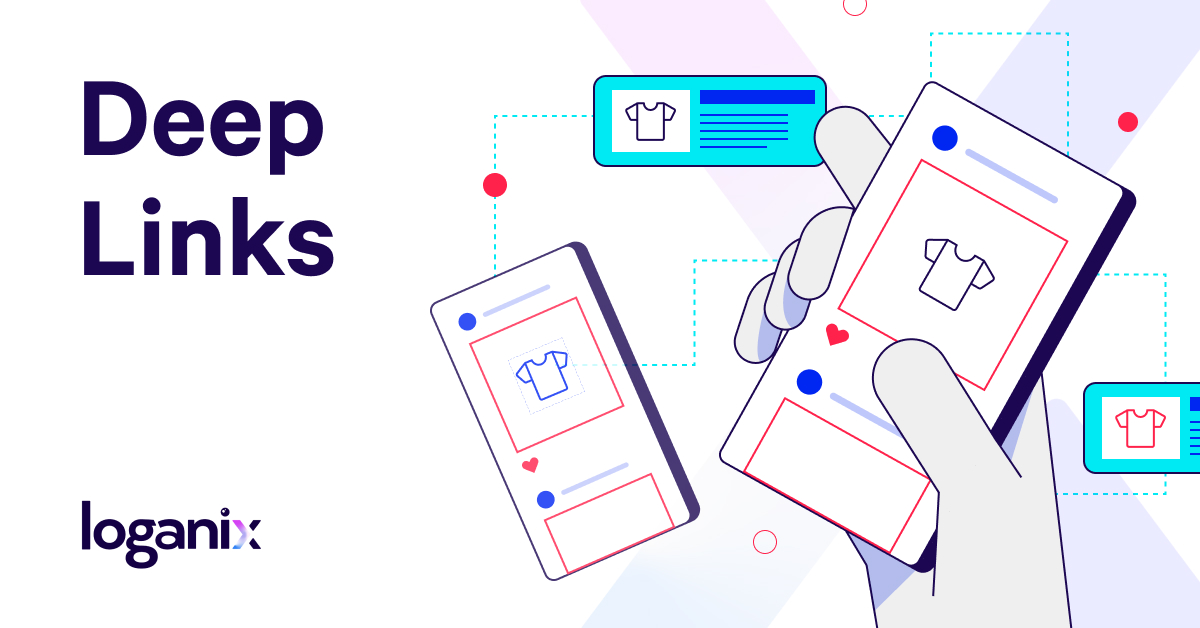Deep Linking 101: Your Guide To Deephotlinks & SEO Success
Are we on the cusp of a new era in web navigation, one where the traditional hyperlink gives way to a more precise and engaging experience? Deep linking, or deephotlinking as some prefer, is poised to revolutionize how we interact with the digital world, offering users the power to leap directly to specific content within websites and applications.
The essence of deephotlinking lies in its ability to bypass the conventional route of navigating a website, which often begins at the homepage. Instead of forcing users to sift through menus and sections, deephotlinks whisk them away to the precise location they seek, whether its a particular article, a specific product, or a particular feature within an app. This targeted approach significantly enhances user experience, a critical factor in today's fiercely competitive digital landscape.
At its core, a deephotlink is simply a specialized type of hyperlink. Unlike a standard hyperlink, which typically points to a homepage or a general section of a website, a deephotlink is crafted to lead directly to a specific page or element within that website. This precision is what sets it apart and fuels its potential to transform web browsing.
- Watch Kannada Movies Online Latest Releases Where To Stream
- Monalita Leaks See The Viral Xxx Content Now
Deep linking has emerged as a powerful technology that has transformed the way users interact with apps and websites. Its significance is amplified in the digital age where user experience reigns supreme. The understanding of deep linking is an essential component for all businesses looking to elevate their customer engagement.
Consider the scenario: a user searches for a particular product on an e-commerce site. Instead of landing on the homepage and then having to search again, a deephotlink can direct them straight to the product page. This not only saves the user valuable time but also provides an immediate connection to the desired content. This streamlined approach also holds significant implications for mobile applications.
However, the term "deephotlink" itself is not universally recognized. While the concept of deep linking is widely understood, the specific term "deephotlink" is less common. The more prevalent term is "deep linking," or simply "deep links." Regardless of the nomenclature, the underlying principle remains the same: providing direct access to specific content within a digital environment. This distinction is important because it reflects the evolving nature of the digital landscape and the ongoing refinement of terminology.
Implementing deephotlinks can be a highly effective strategy for enhancing user experience and improving website performance. But how does one go about it? The implementation process can vary depending on the platform, but the general principles remain consistent. The primary step involves creating a link that points directly to a specific piece of content. This often involves using specific URLs or parameters to identify the target destination within the website or app. This is generally a technical implementation but can have a dramatic impact on overall usability.
One of the critical aspects of deephotlink implementation is the use of relevant and descriptive anchor text. Anchor text is the clickable text that users see when they click on a link. Using clear, concise, and accurate anchor text helps users understand where the link will take them. For example, instead of using the generic "click here," use anchor text like "Learn more about our new product launch." This provides a clear signal to the user and enhances the overall user experience.
Moreover, the careful use of deephotlinks can significantly improve SEO performance. Search engines can recognize and index deep links, which can help improve the ranking of specific pages and content within a website. This is because deep links provide valuable context to search engines, indicating the relevance of a particular page to a specific search query. As a result, deephotlinks can drive more targeted traffic to a website, ultimately leading to more conversions and sales.
However, it's important to approach the implementation of deephotlinks with a strategic and mindful approach. Overuse of deephotlinks can lead to a cluttered and confusing user experience. Similarly, using vague or misleading anchor text can diminish trust and harm user engagement. Its a balancing act: utilizing them effectively without overwhelming the user.
The benefits of deep linking are numerous, from streamlining user journeys to improving SEO. Deep links are a fundamental feature in the arsenal of mobile marketers and app developers alike, serving as critical connectors between users and specific content or actions within mobile apps and websites.
Beyond the technical aspects, the impact of deephotlinks on user experience cannot be overstated. By eliminating unnecessary steps and providing direct access to information, deephotlinks create a more efficient and engaging browsing experience. They allow users to quickly access what they need, reducing frustration and increasing satisfaction.
Consider also the implications for mobile applications. In the world of mobile apps, deep linking is essential for connecting users with specific content within the app. This allows marketers and developers to drive users directly to the information they want, making the app more user-friendly and increasing its value.
But what about the potential pitfalls? Overusing deephotlinks can lead to a cluttered and confusing user experience. Imagine a web page overflowing with links, each promising a different destination. This can overwhelm users and make it difficult to find the information they need. Similarly, failing to regularly test deephotlinks can lead to broken links and frustration for users.
The core of what these links are is important to understand. A deephotlink is a special kind of link that takes you right to a certain page or a section within a website or app. This directness is what makes them so powerful. They're really useful because they let you skip navigating through a whole site.
Deephotlinks are particularly effective in the context of e-commerce. Imagine a user searching for a specific product. A well-crafted deephotlink can transport them directly to the product page, bypassing the homepage and the need to navigate through menus. This streamlined approach not only saves the user time but also improves the conversion rate.
The structure of a deep link is also something to consider. This link is made up of the authority and hostname, in addition to the specific path and optional parameters which define the exact target.
This directness is a hallmark of successful deephotlinking. The most effective links are those that seamlessly connect users to what they are looking for. The rise of deephotlinking also brings new considerations. The use of vague or misleading anchor text can backfire, creating confusion and eroding trust. The most effective links are clear, concise, and precisely match the content they link to.
The evolution of the internet is marked by innovation. The emergence of deephotlinking is an example of the evolution of how we interact with the digital world.
Another example of the practical application of deep linking is found in the realm of social media. If a user shares a specific article on a social media platform, a deephotlink can ensure that clicking on the link will take users directly to that article, rather than the website's homepage. This targeted approach improves the user experience and makes content more readily accessible.
The power of deephotlinks should not be underestimated. They have the capacity to deliver users to the content they desire, improving their online journey in the process. The use of deephotlinks has the potential to improve SEO performance, increasing a website's visibility and reach. The key to successful deep linking lies in strategic implementation, a commitment to user experience, and a constant focus on providing relevant content.
The term "deephotlinking" is often used to describe the practice of creating hyperlinks that point directly to specific pages or content within a website, bypassing the homepage. It's a technical advantage that, when used well, can transform web browsing.
A very practical example: a user sees a promotion for a product in an email. A well-designed deephotlink will take them directly to the product page, ready to make a purchase. This type of precision is a hallmark of successful deephotlinking. In contrast to standard hyperlinks that lead to homepages or main sections of a website, deephotlinks pinpoint exact locations within a page, thereby improving navigation and enhancing engagement.
The future of web browsing is increasingly reliant on providing users with a seamless and intuitive experience. Deephotlinks provide precisely that and can offer that experience. By focusing on direct access to content, they enhance the user experience and increase engagement. Deephotlinking is poised to become an integral part of the digital landscape, with the potential to redefine how users interact with apps and websites. The evolution of the internet is happening in front of us. The use of deephotlinks can help businesses increase their reach and visibility.
In conclusion, deephotlinks, or deep links, represent a powerful tool for enhancing user experience and improving website performance. By providing direct access to specific content, they streamline the browsing experience and boost engagement. While proper implementation and mindful usage are crucial, the benefits of deephotlinks are clear. They have the potential to revolutionize how users interact with the digital world, making information more accessible and creating a more efficient and engaging browsing experience. The path forward for the internet involves the strategic embrace of deep linking and its ability to deliver an enhanced user experience. Remember, the power of deephotlinking lies not just in the technology itself but in the mindful execution and the ability to serve the user with precision and care.
- Alana Cho Leak The Full Story Her Response Impact
- Kannada Movies 2024 Reviews Where To Watch Movierulz Risks

Unveiling The Mystique Of Deephotlink A Digital Odyssey Ultimte Guide

Unveiling Deephotlink The Gateway To Stunning Visuals

Deep Dive Into Deep Hot Links Mastering SEO